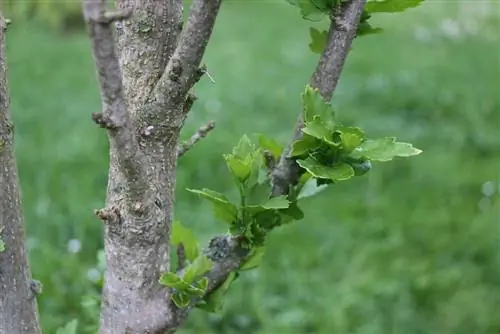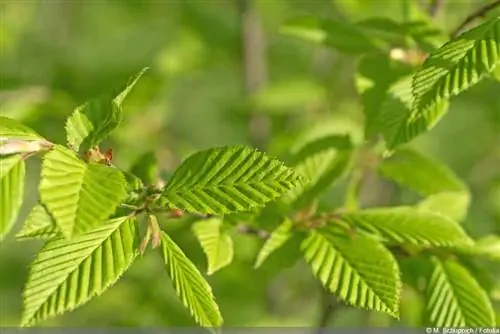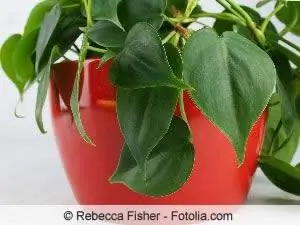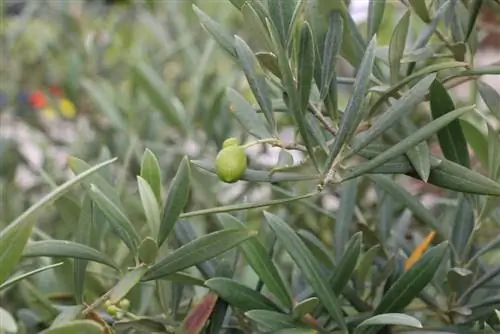- Author admin [email protected].
- Public 2023-12-17 03:39.
- Last modified 2025-01-24 12:45.
A blooming hibiscus is a true ornament - regardless of whether it was planted outdoors or adorned in a pot. It is therefore particularly annoying when the plant, also known as marshmallow, does not bloom. But as numerous as the causes for this can be, they can usually be eliminated quickly and the flowering power can be strengthened again.
Location
The location for the garden marshmallow should be sunny or partially shaded at most. If it is too dark, the hibiscus will lose its flowering power. Even if roots have formed, if the location conditions are incorrect, they are often shed before they can open.
In addition, you must pay close attention to drafts and temperature fluctuations. The location can be airy. However, the marshmallow reacts very sensitively to cold drafts. It is therefore ideal to plant or place it protected from the wind. The south side near walls is optimal. On the balcony or terrace, the plant should be placed on the wall of the house rather than on the parapet.
Tip:
For a hibiscus that is grown indoors, drafts must also be taken into account. The garden marshmallow should not stand near leaky windows and doors or when ventilating in the middle of a draft. He should also change his location as rarely as possible, because he doesn't tolerate it well.
Substrate
The substrate can also be a reason why the hibiscus does not bloom. It should meet the following requirements:
- Container plant or potting soil
- Slightly acidic or neutral
- Neither clay nor loamy
- Not prone to compaction
- Moderate to high nutrient content
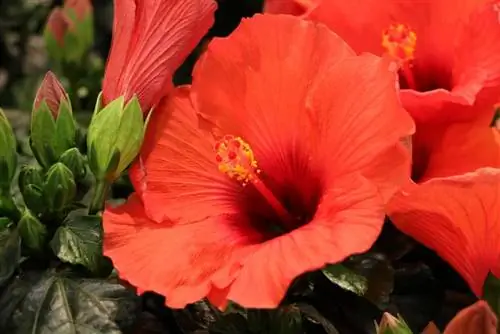
A high-quality and nutrient-rich potting soil is recommended. If the substrate is older, adding mature compost and, if necessary, some sand can ensure the optimal conditions. In fact, a mixture of mature compost and a little sand can also be used directly.
Pouring
The water content of the soil and humidity play crucial roles in the flowering of the marshmallow. If there are constant changes in humidity, this can cause problems for the sensitive buds. The effects of incorrect watering are even greater. The following factors should be taken into account:
- Do not use cold water, it should be stale and at least correspond to the outside or room temperature
- We only water when the top layer of the substrate has dried
- Watering should be done regularly to avoid extreme fluctuations
- Waterlogging must be avoided urgently so that root rot does not occur
Fertilize
A sufficient supply of nutrients is crucial for the marshmallow to produce buds and flowers. If they are missing, the plant inevitably weakens and no longer has the strength to produce leaves and flowers.
The hibiscus should therefore be cared for accordingly. The following are advisable:
- Liquid fertilizer
- Pond water
- Plant broth or plant manure
- Compost
- Patentpotash
Liquid fertilizer, pond water and plant broth and manure can be administered every two weeks during growth and flowering. Compost should only be sprinkled onto the soil once a month and lightly worked into the surface. Patentkali is only administered once a year, between August and September.
Tip:
A clear sign of a nutrient deficiency is overall poor growth, but wilted or discolored leaves can also indicate this.
Blend
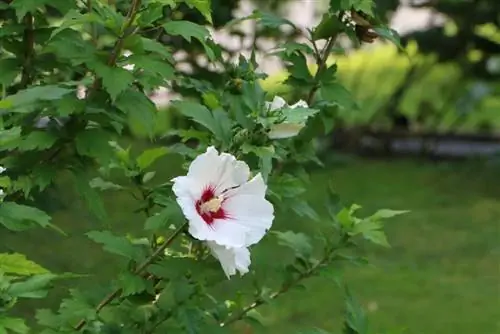
The marshmallow can be wonderfully cut into shape - be it as a standard tree or a shrub. However, buds can also “fall victim” to the measure. The best time is therefore in late winter, around January or February. The trimmings can also be left out, but in the long term it promotes the strong development of buds and flowers. If the marshmallow no longer blooms, rejuvenating pruning could help.
When cutting hibiscus, the following points should be taken into account:
- Use clean, ideally disinfected cutting tools
- Remove all dead and weak shoots as close as possible to the main trunk or the next largest branch
- Thinning the crown if necessary
- Remove about a quarter of the length all around
With a rejuvenation cut, all shoots are shortened more radically. Only a length of 30 to 60 centimeters per shoot remains. This procedure is only necessary if the marshmallow has not been trimmed for several years and the flowering power is decreasing.
Frost
An established garden marshmallow is frost-hardy and requires no further precautions in a wind-protected location in order to survive the winter unscathed. However, things are a little different with young plants and cultivation in containers. A hibiscus in a pot should be kept indoors and frost-free over the winter. The only thing that needs to be ensured is that the temperature of the winter quarters is not more than 10°C and that the substrate does not dry out completely.
If the marshmallow has just been planted or is a young plant, the hibiscus should be well protected outdoors with a layer of mulch. Wrapping it with garden fleece can be useful in windy or drafty locations to conserve the plant's strength and thus increase its flowering power.
Care errors, diseases and pests
The garden marshmallow is robust in itself, but can suffer from root rot or chlorosis due to care errors. Root rot occurs due to waterlogging, for example excessive watering or poor water drainage. These risk factors can be avoided by adding drainage to the planting hole or container and watering appropriately. If the hibiscus is already diseased, it must be dug up, dead root ends removed and the substrate changed.
Chlorosis is a deficiency symptom that is noticeable through discolored leaves and missing flowers. Fertilization has both a preventive and balancing effect.

The most common pests are spider mites and aphids. Both species can weaken the marshmallow and thus cause a loss of flowers. It helps against aphids to spray the plant thoroughly with nettle broth every day. For spider mites, it helps to increase the humidity around the leaves. The hibiscus is showered and wrapped with foil. It would be ideal if this could be installed in an airtight manner. After two to four days, the foil is removed and the hibiscus is showered again. The measure is repeated until no more spider mites and webs can be seen. However, the leaves and bark should be allowed to dry in between so that mold does not form.
Tip:
If the hibiscus is no longer blooming, it should be examined closely for signs of diseases and pests. These can often cause weakening and loss of buds almost unnoticed for a long time.
Conclusion
If the flowering power of the marshmallow is decreasing or missing, it often helps to check the conditions at the location and the care and adjust if necessary. If you find out about the plant's requirements and the most important requirements in advance, you can even prevent the hibiscus from blooming.

